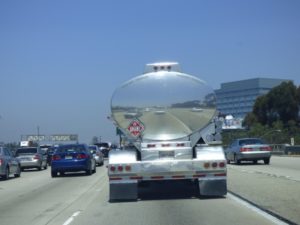One of the greatest dangers in a Fort Myers trucking accident is the risk of a smaller vehicle ending up underneath a large commercial trailer. So serious was this problem that in 1998, the Federal Motor Carrier Safety Administration (FMCSA) implemented a requirement that vehicles weighing 10,000 pounds or more and manufactured after 1998 must be equipped with underride guards. These steel features are supposed to prevent other vehicles from ending up underneath a large truck, which is associated with catastrophic injuries. 
The underride guard requirement only pertains to certain trucks and even then, only to the rear. The issue still affects a significant number of cases. For example, the Insurance Institute for Highway Safety (IIHS) reports that all the advances in modern vehicle technology are not effective if a vehicle ends up under a truck. The way most underride guards are designed, a passenger vehicle that rear-ends a semi-truck at an angle can still end up under the truck.
In 2011, of the more than 2,200 passenger vehicle occupant deaths in large truck accidents nationally, 260 died when the front of their vehicle struck the rear of a truck. It’s not clear exactly how many of those instances involved underride, but a 2011 study by IIHS found that of 115 fatal truck crashes, about half indicated severe or catastrophic underride damage.
So that brings us to the case of Quilez-Velar v. Ox Bodies Inc., a case that originated in Puerto Rico but was decided recently by the U.S. Court of Appeals for the First Circuit.
According to the truck accident lawsuit records, this was a $6 million crash case for which the damage award was reduced to $1.2 million. Plaintiff sued the manufacturer of an underride guard after plaintiff’s decedent, a young mother who was driving with her toddler in the back seat, was killed when her Jeep collided with the rear of a city truck, ending up partially underneath the truck.
Defendant appealed the jury’s decision, arguing trial court improperly allowed plaintiff’s expert witness to testify. The appeals court agreed. However, with regard to reduction of damages, the appeals court certified the question of joint and several liability to the Puerto Rico Supreme Court.
Decedent, a 28-year-old mother, was driving on an overpass in San Juan when her vehicle slammed into a stopped/ slow-moving city truck. There was an underride guard on the rear of that truck, but decedent’s Jeep still went underneath. She died six days later. Her young son survived.
Plaintiff took action against a number of defendants, including the city and the manufacturer of the underride guards. The city settled for $500,000, its maximum policy limit.
Trial against manufacturer continued and jurors found the manufacturer was negligent. However, manufacturer determined the city – which was not a party to the case, the claims against it having been dismissed by the $500,000 payment – was 80 percent liable, while the manufacturer was only 20 percent liable.
But whether the manufacturer can be made to pay the entire damage award in this case – as it would be in a system that allows defendants to be held jointly and severally liable – is a question for the high court in Puerto Rico. Information on joint and several liability in Florida can be found here.
Call Associates and Bruce L. Scheiner, Attorneys for the Injured, at 1-800-646-1210.
Additional Resources:
Quilez-Velar v. Ox Bodies Inc., May 9, 2016, U.S. Court of Appeals for the First Circuit
More Blog Entries:
Nielsen v. Bell – Child Negligence in Injury Lawsuit, May 10, 2016, Fort Myers Trucking Accident Lawyer
